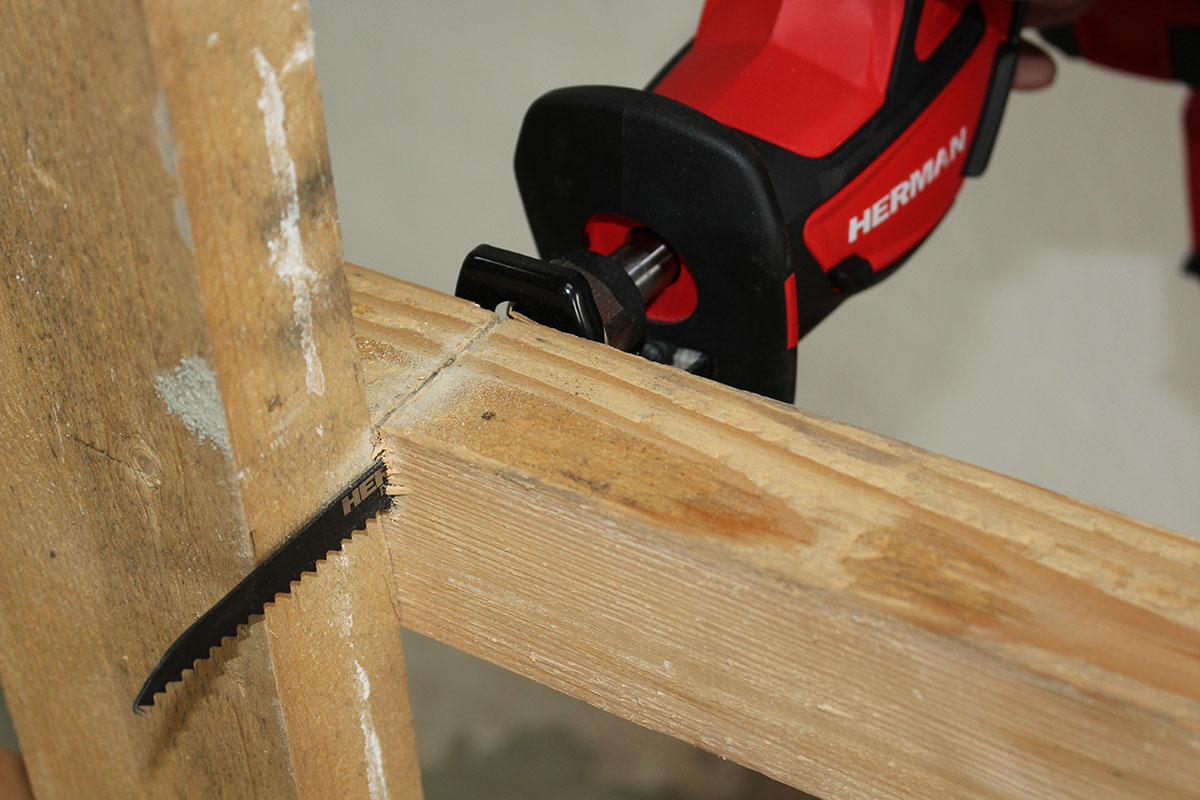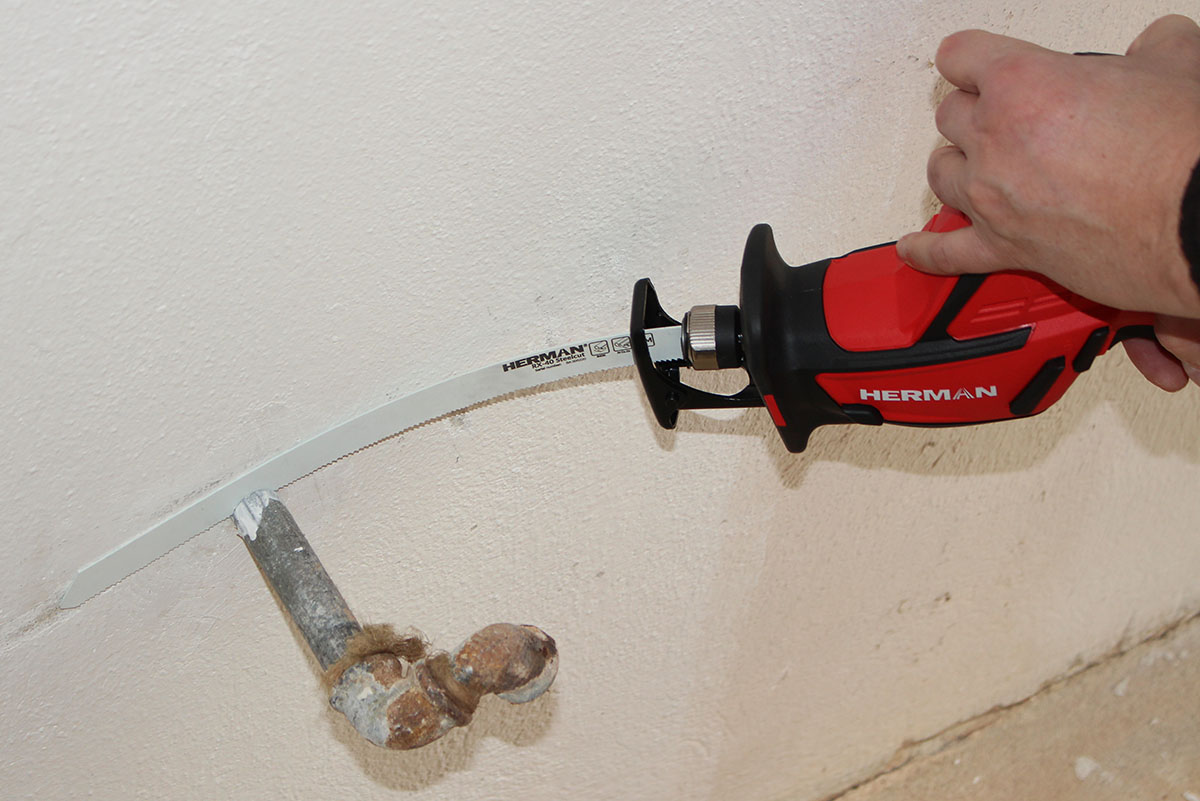Tail saw – an underrated tool
Tail saw ( tail saw, saber saw, reciprocating saw) is a fantastic multifunctional tool with a promising future. It has such a wide cutting range that no other tool can match it. In conjunction with suitable saw blades, it can cut wood, plywood, steel, stainless steel , cast iron, plastics, glass, bricks, paving, composite materials, aerated concrete and various other building materials. It also cuts in places where the possibilities of other tools end. It is used everywhere in the construction industry. It is very likely that one day it will become one of the most widely used tools.
What does a tail saw consist of?
The key elements of the tail saw are the guide slide (1) with the support foot. The guide slide can be extended to a certain extent and fixed in the set position with the locking button (2). With this setting, the foot not only allows you to change the reach of the saw blade, but it rests on the cut material when cutting and prevents the saw from pushing away from the cut or pulling towards it during its movement. A suitable setting also reduces the vibrations of the saw blade during cutting, provides greater comfort to the operator and increases the speed and quality of cutting.
A standard feature of modern tail saws is the saw blade holder (3) with a quick-clamping system, which allows you to change the saw blade (4) in an instant, without using any additional tools. The speed of the oscillations can mostly be adjusted smoothly with the switch (5) with regulation. Some models have regulation solved by a separate regulatory element.

fig. 1 The main parts of the tail saw
A comparison between a jigsaw and a jigsaw.
A tail saw has a similar principle of operation as a straight saw. After turning on the engine, the rotary motion of the engine is converted into a reciprocating one by means of a transmission mechanism (gearbox with an eccentric cam), in which the cutting effect is achieved by pushing and pulling the saw blade.
fig. 2 Gearbox with eccentric cam
However, both of these tools have different advantages.
The tail saw has a saw blade fixed in a horizontal position and, thanks to the adjustable foot, enables sawing on any surface, in any position, in hard-to-reach places, at an angle and even directly against a wall.
A straight-line saw has a saw blade fixed in a vertical position and enables precise work only on a flat surface.
Modern chainsaws, especially those for professional use in the construction industry, are equipped with a lithium-ion battery with a voltage of 18 V and a capacity of at least 4 Ah and are designed with a well-distributed center of gravity. Thanks to this, they allow working in inaccessible places and in uncomfortable positions, for example overhead.
Scope of use
When you are looking for an alternative among modern tools that can perform various cutting operations, then the tail saw is the best choice. The reason is precisely because of its ability to cut all kinds of materials.

fig. 3 Cutting the wooden batten close to the wall

fig. 4 Cutting the steel pipe flush with the wall
Climbing roofs or trees with a chainsaw running is not very practical and safe, and a lighter chainsaw is much more suitable for that. A heating engineer or a plumber will not cut a steel or plastic pipe close to the wall with an angle grinder. Slim body construction and a long, flexible saw blade make it possible to cut where a hacksaw wouldn't fit, cutting pipes or reinforcing bars flush with a wall, floor or other surface is impossible without a tail saw...
Actually it is. It is possible.

fig. 5 Cutting a wooden pallet with nails
The wall can also be cut to get to the pipe, for example, with a hacksaw or an angle grinder. And after cutting, the wall can be repaired again. It is still possible to work - the question is the final effect.
A tail saw with a suitable saw blade cuts without sparks, does not scatter dirt in the surroundings that occurs when cutting with other tools, less dust when cutting bricks and cement blocks. It has proven itself in demolition work - door frames, window frames, sewer and heating pipes are easily sawed with it. It is irreplaceable when cutting bodies or corroded screws.
You can do everything with it that you can do with a hand saw for wood or metal, but more efficiently, faster and more comfortably. Simply - a tail saw in combination with a suitable saw blade is a specialty that every builder will appreciate.
Sources:
HERMAN internal technical and training materials
https://en.wikipedia.org/wiki/Reciprocating_saw

 International
International


No one has rated the article yet.